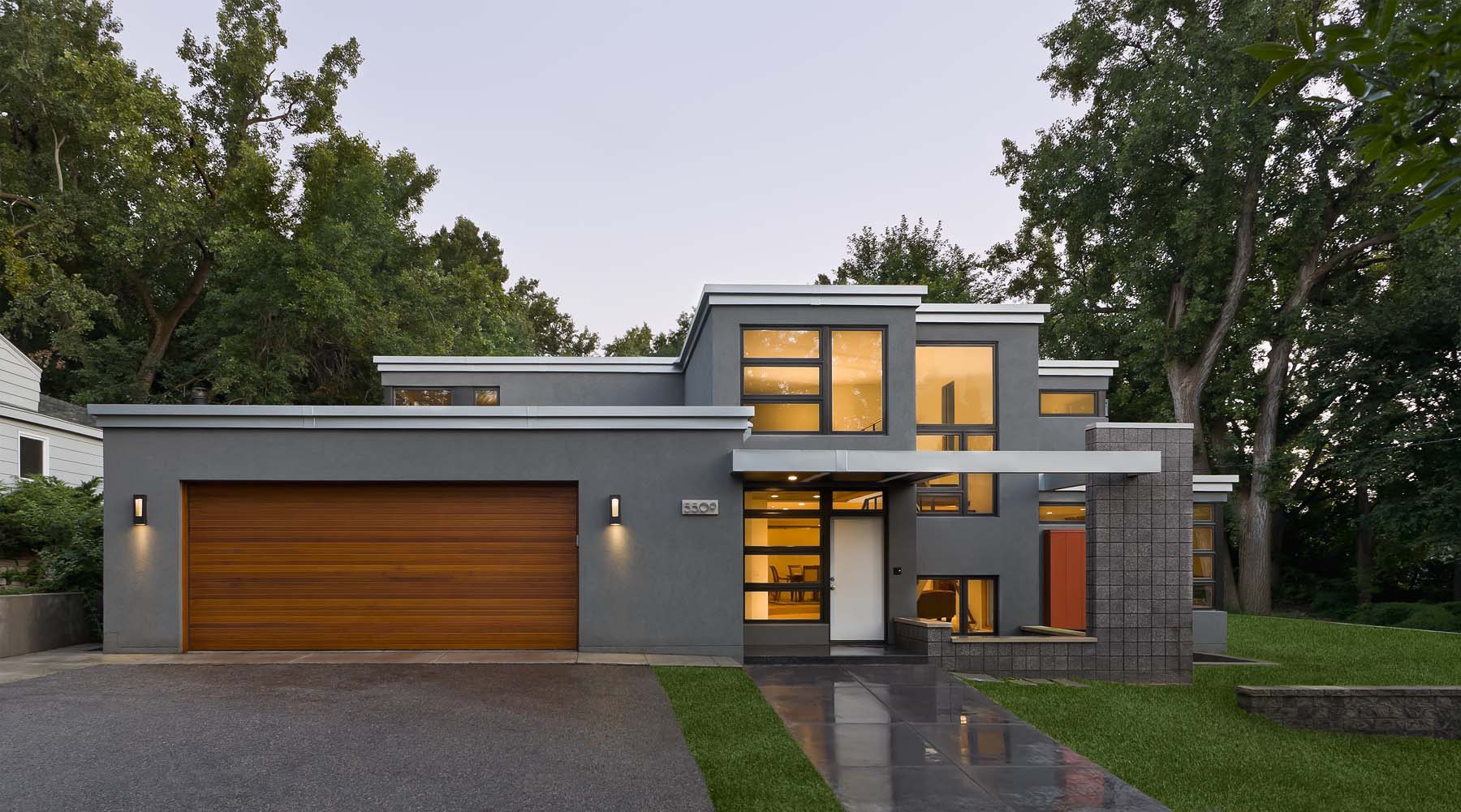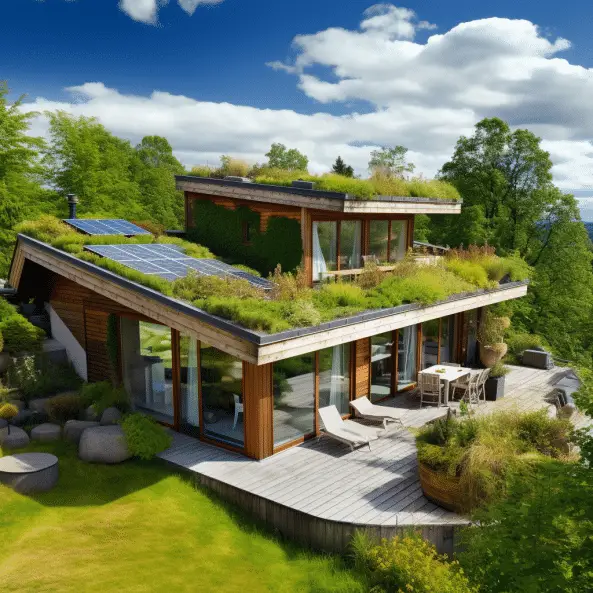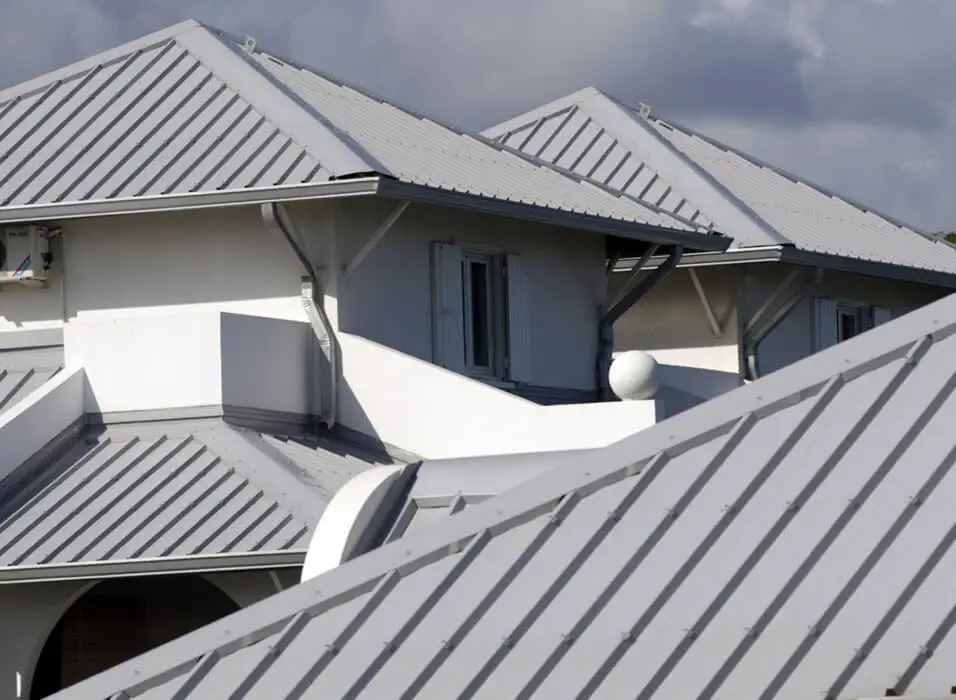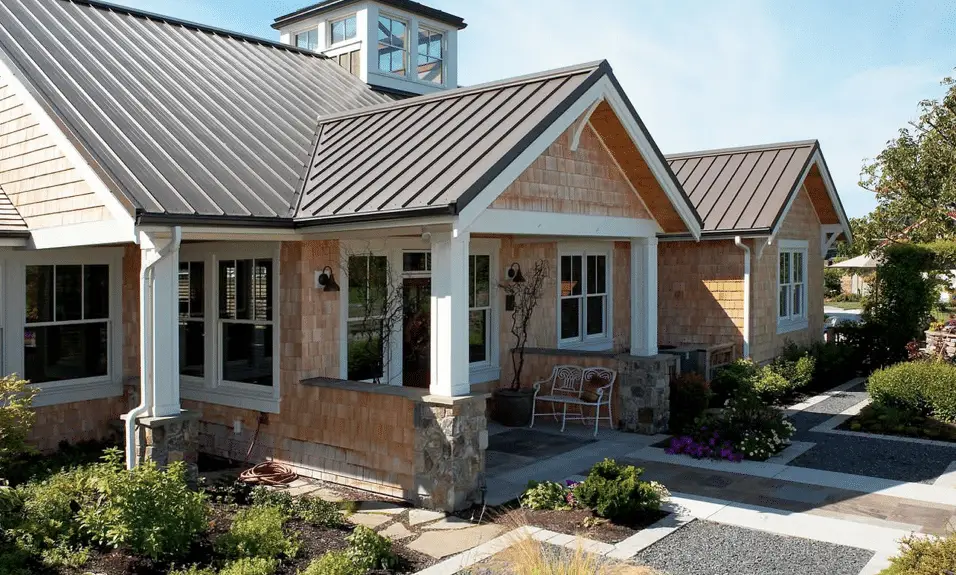What Is The Best Material For A Flat Roof
Introduction
What Is The Best Material For A Flat Roof: A flat roof is a popular choice for many homeowners and commercial property owners due to its sleek and modern design. However, when it comes to choosing the best material for a flat roof, there are several factors that need to be considered. The material used for a flat roof plays a crucial role in its durability, longevity, and overall performance. In this article, we will explore the different materials available for flat roofs and discuss their pros and cons.
One of the most commonly used materials for flat roofs is asphalt. Asphalt roofs are known for their affordability and ease of installation. They are made up of multiple layers of asphalt and fiberglass, which provide excellent protection against the elements. Asphalt roofs are also relatively low-maintenance and can last for up to 20 years with proper care. However, they may not be the best choice for areas with extreme weather conditions, as they can be prone to cracking and damage from hail or heavy snowfall.
Another popular roofing material for flat roofs is EPDM. EPDM, or ethylene propylene diene terpolymer, is a synthetic rubber roofing membrane that offers exceptional durability and resistance to UV rays. It is highly flexible and can easily adapt to temperature changes without cracking or splitting. EPDM roofs are also known for their longevity, with a lifespan of up to 50 years. However, they can be more expensive than other materials and may require professional installation.
For those looking for a more eco-friendly option, a green roof may be the best choice. Green roofs are covered with vegetation, which provides insulation, reduces stormwater runoff, and improves air quality. They can also help to reduce energy costs by providing natural insulation. However, green roofs require regular maintenance and can be more expensive to install initially. Additionally, they may not be suitable for all types of buildings or climates.
Lastly, metal roofs are gaining popularity as a material for flat roofs. Metal roofs are known for their durability and resistance to fire, rot, and insects. They can last for up to 50 years or more and require minimal maintenance. Metal roofs are also energy-efficient, as they reflect sunlight and reduce heat absorption. However, they can be more expensive than other materials and may be prone to denting or noise during heavy rain or hailstorms.
Choosing the best material for a flat roof depends on various factors such as budget, climate, and personal preferences. It is important to consider the pros and cons of each material before making a decision. Consulting with a professional roofing contractor can also provide valuable insights and guidance in selecting the most suitable material for your flat roof.

What kind of roofing material is best for a flat roof?
A variety of materials can be used to make a flat roof. The most common ones include EPDM rubber, single-ply (TPO, PVC), modified bitumen, built-up roofs (BUR), and spray polyurethane foam. Many homeowners choose either EPDM or TPO. EPDM roofs are affordable and can reach a lifespan of 30+ years.
Introduction:
A flat roof is a popular choice for many homeowners due to its sleek and modern design. However, choosing the right roofing material for a flat roof is crucial to ensure its longevity and durability. With a wide range of options available in the market, it can be overwhelming to determine which roofing material is best suited for a flat roof. In this article, we will explore some of the top roofing materials that are commonly used for flat roofs and discuss their advantages and disadvantages.
EPDM:
One of the most popular choices for flat roofs is EPDM (Ethylene Propylene Diene Monomer) roofing material. EPDM is a synthetic rubber membrane that offers excellent resistance to UV rays, ozone, and weathering. It is highly durable and can last up to 30 years with proper maintenance. EPDM is also known for its flexibility, making it ideal for flat roofs that may experience expansion and contraction due to temperature changes. Additionally, EPDM is relatively easy to install and repair, making it a cost-effective option for homeowners.
TPO:
Thermoplastic Olefin (TPO) is another popular roofing material for flat roofs. TPO is a single-ply membrane that is highly reflective, helping to reduce energy costs by keeping the building cool. It is also resistant to UV rays, chemicals, and punctures, making it a durable option for flat roofs. TPO is available in various thicknesses, allowing homeowners to choose the one that best suits their needs. However, it is important to note that TPO may not be as long-lasting as other roofing materials and may require more frequent maintenance.
Modified Bitumen:
Modified Bitumen is a type of asphalt roofing material that is commonly used for flat roofs. It is made by combining asphalt with modifiers such as rubber or plastic, which enhance its durability and flexibility. Modified Bitumen is known for its excellent waterproofing properties and resistance to extreme weather conditions. It is also relatively easy to install and repair, making it a popular choice for flat roofs. However, it is important to ensure proper insulation and ventilation when using Modified Bitumen to prevent heat buildup and potential damage to the roof.
Choosing the best roofing material for a flat roof depends on various factors such as budget, climate, and personal preferences. It is important to consult with a professional roofing contractor to assess the specific needs of your flat roof and determine the most suitable material. Whether you opt for EPDM, TPO, or Modified Bitumen, proper installation and regular maintenance are key to ensuring the longevity and performance of your flat roof.
What is the longest lasting flat roof material?
EPDM
The longest lasting flat roofing material, EPDM offers exceptional durability for both commercial and residential structures. With an increased rubber thickness, this resilient material provides excellent puncture and tear resistance, lasting for up to half a century.
Introduction:
A flat roof is a popular choice for many homeowners and commercial property owners due to its sleek and modern design. However, one of the main concerns when it comes to flat roofs is their durability and longevity. Choosing the right material for your flat roof is crucial to ensure it can withstand the test of time and provide long-lasting protection for your property.
When it comes to the longest lasting flat roof material, there are several options available in the market. Each material has its own set of advantages and disadvantages, and it’s important to consider factors such as cost, maintenance requirements, and climate suitability before making a decision.
Types of Long-Lasting Flat Roof Materials:
Built-Up Roofing (BUR):
Built-Up Roofing, also known as BUR, is one of the oldest and most traditional flat roof materials. It consists of multiple layers of bitumen and reinforcing fabrics, such as fiberglass or polyester, which are built up to create a durable and waterproof membrane. BUR roofs are known for their exceptional longevity, with some lasting up to 30 years or more with proper maintenance. However, they can be heavy and require professional installation.
Modified Bitumen:
Modified Bitumen is another popular choice for flat roofs due to its excellent durability and flexibility. It is made from asphalt and reinforced with modifiers, such as rubber or plastic, to enhance its performance. Modified Bitumen roofs can last up to 20 years or more and are resistant to extreme weather conditions. They are also relatively easy to install and repair, making them a cost-effective option for many property owners.
Factors to Consider:
When choosing the longest lasting flat roof material, it’s important to consider various factors that can affect its performance and lifespan. One crucial factor is the climate in which the roof will be installed. Different materials have different levels of resistance to UV rays, temperature fluctuations, and moisture. For example, in areas with high heat and intense sunlight, a material with UV resistance, such as TPO or PVC, may be more suitable.
Additionally, proper installation and regular maintenance play a significant role in prolonging the lifespan of a flat roof. It’s essential to hire experienced professionals who can ensure the material is installed correctly and address any potential issues promptly. Regular inspections and maintenance, such as clearing debris and repairing any damages, can also help prevent small problems from escalating into major issues.
Choosing the longest lasting flat roof material requires careful consideration of various factors, including the specific needs of your property, budget, and climate conditions. Built-Up Roofing (BUR) and Modified Bitumen are two popular options known for their durability and longevity. However, it’s crucial to consult with roofing professionals to determine the most suitable material for your specific circumstances. By selecting the right material and ensuring proper installation and maintenance, you can enjoy a flat roof that provides reliable protection for many years to come.
Which roof type is best?
- Built-up Roofing (BUR) Built-up roofing, or BUR roofing, is used primarily for flat roofs.
- Clay Tiles. Clay tile roofing, also known as terracotta, is one of the oldest roofing materials.
- Concrete Roofing. Concrete roofing has a long lifespan and generally lasts about 50 years.
- Green Roofing.
- Wood Roofing.
Introduction:
When it comes to choosing the best roof type for your home, there are several factors to consider. The roof is an essential component of any building, providing protection against the elements and enhancing the overall aesthetics. With a wide range of options available, it can be overwhelming to determine which roof type is the most suitable for your needs. In this article, we will explore different roof types and discuss their advantages and disadvantages, helping you make an informed decision for your home.
Types of Roof:
One of the most popular roof types is the pitched or sloped roof. This traditional style is characterized by its triangular shape and is commonly seen in residential buildings. The pitched roof offers excellent drainage capabilities, preventing water from pooling and causing damage. Additionally, it provides ample attic space, allowing for better ventilation and insulation. However, the installation of a pitched roof can be more complex and costly compared to other options.
Another common roof type is the flat roof. As the name suggests, this style features a horizontal or nearly horizontal surface. Flat roofs are often chosen for their modern and minimalist appearance. They are relatively easier and cheaper to install compared to pitched roofs. However, one drawback of flat roofs is their limited drainage capabilities, which can lead to water pooling and potential leaks if not properly maintained.
Advantages and Disadvantages:
Each roof type has its own set of advantages and disadvantages. For instance, pitched roofs offer better water drainage and increased attic space, but they can be more expensive to install. On the other hand, flat roofs are more cost-effective and provide a sleek aesthetic, but they require regular maintenance to prevent water pooling. It is crucial to consider your specific needs, budget, and climate conditions when deciding on the best roof type for your home.
Choosing the best roof type for your home involves careful consideration of various factors. The pitched roof offers excellent drainage and attic space but can be more expensive. Flat roofs provide a modern look and are cost-effective, but they require regular maintenance. Ultimately, the decision should be based on your preferences, budget, and the specific requirements of your location. Consulting with a professional roofing contractor can also provide valuable insights and guidance in selecting the most suitable roof type for your home.
Is rubber or metal better for flat roof?
Not only that, both materials also perfectly replicate the look of traditional shakes and shingles but without the high-maintenance hassle. Considering all of these factors, there is no one better roofing option when it comes to metal and rubber roofs.
Introduction:
When it comes to choosing the right material for a flat roof, the decision between rubber and metal can be a challenging one. Both options have their own set of advantages and disadvantages, and it ultimately depends on various factors such as climate, budget, and personal preferences. In this article, we will explore the characteristics of rubber and metal roofs to help you make an informed decision.
Rubber Roofs:
Rubber roofs, also known as EPDM (ethylene propylene diene terpolymer) roofs, have gained popularity in recent years due to their durability and cost-effectiveness. EPDM is a synthetic rubber material that is highly resistant to UV rays, ozone, and extreme weather conditions. This makes rubber roofs an excellent choice for areas with harsh climates.
Furthermore, rubber roofs are relatively easy to install and require minimal maintenance. They are lightweight, which reduces the stress on the building’s structure. Rubber roofs also have excellent insulation properties, helping to keep the building cool in summer and warm in winter. Additionally, EPDM roofs have a long lifespan, typically lasting up to 30 years or more with proper care.
Metal Roofs:
Metal roofs, on the other hand, offer their own set of advantages. They are known for their strength and durability, making them an ideal choice for areas prone to heavy snowfall or high winds. Metal roofs are typically made of steel, aluminum, or copper, each with its own unique properties.
One of the key benefits of metal roofs is their longevity. They can last up to 50 years or more, making them a long-term investment. Metal roofs are also fire-resistant and can effectively reflect sunlight, reducing energy costs. Additionally, they are low-maintenance and can be easily cleaned with water and mild detergent.
The choice between rubber and metal for a flat roof depends on various factors such as climate, budget, and personal preferences. Rubber roofs are durable, cost-effective, and offer excellent insulation properties. On the other hand, metal roofs are known for their strength, longevity, and fire resistance. It is advisable to consult with a professional roofing contractor to assess your specific needs and determine the most suitable material for your flat roof.
How long do flat rubber roofs last?
between 40 and 50 years
But how durable are rubber roofs, anyway? A well-installed rubber roof is incredibly durable, lasting between 40 and 50 years if properly maintained. Of course, rubber roofs will last much longer if installed with proper drainage in mind.
Flat rubber roofs are a popular choice for many homeowners due to their durability and longevity. These roofs are made from a synthetic rubber material called ethylene propylene diene monomer (EPDM), which is known for its excellent weather resistance and flexibility. EPDM roofs have been used for decades and have proven to be highly reliable in protecting buildings from the elements.
One of the most frequently asked questions about flat rubber roofs is their lifespan. Homeowners want to know how long they can expect their rubber roof to last before needing replacement. The answer to this question depends on various factors, including the quality of the installation, the climate in which the roof is located, and the level of maintenance provided.
On average, flat rubber roofs can last between 25 to 30 years when properly installed and maintained. However, it is important to note that this is just an estimate, and some rubber roofs may last even longer with proper care. Regular inspections and maintenance, such as cleaning debris and checking for any signs of damage, can help extend the lifespan of a rubber roof.
One of the key advantages of flat rubber roofs is their resistance to various weather conditions. EPDM roofs can withstand extreme temperatures, from freezing cold to scorching heat, without deteriorating. They are also highly resistant to UV radiation, which can cause other roofing materials to degrade over time. This makes flat rubber roofs an excellent choice for areas with harsh climates.
Another factor that contributes to the longevity of flat rubber roofs is their ability to resist moisture. EPDM is a waterproof material that prevents water from seeping into the building, protecting it from leaks and water damage. This is particularly important in areas with high rainfall or frequent storms.
Flat rubber roofs are a durable and long-lasting roofing option. With proper installation, maintenance, and care, they can provide reliable protection for your home or building for several decades. Regular inspections and prompt repairs can help identify and address any issues before they become major problems. If you are considering a flat rubber roof, it is advisable to consult with a professional roofing contractor who can provide expert advice and ensure a high-quality installation.
When it comes to choosing a material for a flat roof, there are several options available, each with its own set of advantages and disadvantages. One commonly used material is built-up roofing (BUR), which consists of multiple layers of asphalt and felt. BUR offers excellent waterproofing capabilities and is relatively inexpensive compared to other options. However, it can be heavy and may require additional structural support. Additionally, BUR can be prone to leaks if not properly installed or maintained.
Another popular material for flat roofs is single-ply membrane roofing, which includes materials like EPDM (ethylene propylene diene terpolymer) and TPO (thermoplastic olefin). These membranes are lightweight, flexible, and resistant to UV rays. They provide good insulation and are relatively easy to install. However, they may be more susceptible to punctures and require regular inspections to ensure their integrity.
Metal roofing is also an option for flat roofs, offering durability and longevity. Metal roofs are resistant to fire, insects, and rot, making them a low-maintenance choice. They can also reflect sunlight, reducing cooling costs. However, metal roofs can be expensive upfront and may require professional installation. They can also be noisy during rain or hailstorms.
What are the different materials commonly used for flat roofs?
Flat roofs are commonly used in both residential and commercial buildings, and various materials can be used to construct and waterproof them. The choice of material depends on factors such as budget, climate, and intended use. Here are some of the most common materials used for flat roofs:
Built-Up Roofing (BUR):
- BUR roofs consist of multiple layers of bitumen (asphalt or coal tar) alternated with layers of reinforcing fabric (usually fiberglass or felt).
- These roofs are durable and have good waterproofing properties.
- They can be surfaced with gravel or a reflective coating.
Modified Bitumen Roofing:
- Modified bitumen is a type of asphalt roofing that incorporates modifiers like APP (Atactic Polypropylene) or SBS (Styrene-Butadiene-Styrene) for added durability and flexibility.
- It’s available in rolls or sheets with various installation methods, including torch-applied, cold-applied, or self-adhesive.
- Modified bitumen roofs are known for their excellent waterproofing characteristics.
Single-Ply Membrane Roofing:
- This includes materials like TPO (Thermoplastic Olefin), PVC (Polyvinyl Chloride), and EPDM (Ethylene Propylene Diene Terpolymer).
- Single-ply membranes are lightweight and easy to install.
- They provide good UV resistance and flexibility but can be vulnerable to punctures.
EPDM Roofing:
- EPDM is a synthetic rubber roofing material.
- It’s highly durable and resistant to UV rays and weathering.
- EPDM roofs are typically installed in large sheets, reducing seams and potential leakage points.
TPO Roofing:
- Thermoplastic Olefin (TPO) roofs are energy-efficient and reflective, making them suitable for hot climates.
- They are heat-welded at the seams, providing a strong and watertight seal.
PVC Roofing:
- Polyvinyl Chloride (PVC) roofing is similar to TPO in terms of energy efficiency and reflective properties.
- PVC roofs are heat-welded and provide excellent resistance to chemicals and pollutants.
Metal Roofing:
- Metal roofing, typically made from steel or aluminum, can be used for flat roofs.
- It’s durable, long-lasting, and provides good resistance against fire and extreme weather conditions.
Green or Vegetative Roofs:
- These roofs are covered with a layer of vegetation, such as grass, plants, or trees.
- Green roofs offer insulation benefits, reduce stormwater runoff, and can improve air quality.
Coatings:
- Roof coatings, such as elastomeric coatings, can be applied to existing roofing materials to extend their lifespan and improve their reflective properties.
Spray Foam Roofing:
- Polyurethane foam is sprayed onto the roof and forms a seamless, insulated layer.
- It’s energy-efficient and provides excellent insulation properties.
When selecting a material for a flat roof, it’s essential to consider factors like climate, maintenance requirements, installation cost, and expected lifespan. Additionally, proper installation and regular maintenance are crucial to ensure the longevity and performance of any flat roofing system.
What factors should be considered when selecting a material for a flat roof?
Selecting the right material for a flat roof is a critical decision that depends on various factors. Here are the key considerations when choosing a material for a flat roof:
Climate:
- Consider the local climate, including temperature extremes, precipitation levels, and exposure to sunlight. Some materials perform better in certain climates than others.
Budget:
- Determine your budget for the roofing project. Different roofing materials come with varying costs, including materials, labor, and maintenance.
Durability:
- Evaluate the expected lifespan of the roofing material. A longer lifespan may justify a higher upfront cost if it reduces the need for frequent replacements.
Maintenance Requirements:
- Understand the maintenance needs of the chosen material. Some materials require regular inspections and maintenance, while others are more low-maintenance.
Weight Considerations:
- Ensure that the roofing material is suitable for the structural capacity of your building. Some materials are heavier than others, and the roof structure may need reinforcement to support the weight.
Insulation and Energy Efficiency:
- Consider the insulation properties of the roofing material. Good insulation can reduce heating and cooling costs.
- Some materials, like reflective or cool roofing options, can also help lower energy consumption by reflecting sunlight and reducing heat absorption.
Waterproofing:
- Flat roofs are prone to water pooling, so waterproofing is crucial. Choose a material with excellent waterproofing properties and pay attention to the installation quality, including seams and flashing.
Installation Method:
- Different materials may require specific installation methods, and not all roofing contractors may have expertise in all materials. Ensure that your chosen material can be installed by qualified professionals.
Environmental Impact:
- Consider the environmental impact of the roofing material. Some materials are more sustainable and eco-friendly than others, such as green or cool roofing options.
Local Building Codes and Regulations:
- Ensure that the selected material complies with local building codes and regulations. Some areas may have specific requirements for roofing materials.
Warranty:
- Check the warranty provided by the manufacturer for the roofing material. Understand the terms and conditions of the warranty, including maintenance requirements.
Aesthetics:
- The appearance of the roofing material can also be a consideration, especially for residential buildings. Some materials offer more design options than others.
Fire Resistance:
- In areas prone to wildfires or where building codes require fire-resistant roofing, ensure that the selected material meets these requirements.
Long-Term Cost:
- Consider the total cost of ownership over the life of the roof, including installation, maintenance, and energy savings. Sometimes, a higher initial cost can lead to lower long-term costs.
Compatibility with Rooftop Equipment:
- If your building has rooftop equipment like HVAC units or solar panels, ensure that the roofing material is compatible with the installation and maintenance of this equipment.
Local Expertise:
- Check whether there are experienced roofing contractors in your area who are familiar with the material you want to use. Local expertise can ensure proper installation and maintenance.
By carefully considering these factors, you can make an informed decision when selecting the most suitable material for your flat roof, whether it’s for a residential or commercial building. Consulting with a roofing professional is often a wise step in the decision-making process.
How does the durability of different materials vary for flat roofs?
The durability of flat roofing materials varies significantly based on the type of material used, climate conditions, maintenance practices, and other factors. Here’s an overview of how the durability of different flat roofing materials typically varies:
Built-Up Roofing (BUR):
- Durability: BUR roofs are known for their longevity and durability. With proper maintenance, they can last 20 to 30 years or more.
- Climate Consideration: Suitable for a wide range of climates, but may require additional insulation in colder regions to prevent cracking.
Modified Bitumen Roofing:
- Durability: Modified bitumen roofs are durable and can last 20 to 30 years when well-maintained.
- Climate Consideration: Performs well in various climates, but proper installation and maintenance are essential for longevity.
Single-Ply Membrane Roofing (TPO, PVC, EPDM):
- Durability: EPDM and PVC roofs can have a lifespan of 20 to 30 years or more, while TPO roofs typically last 15 to 20 years.
- Climate Consideration: All three single-ply membranes are used in a range of climates, but UV exposure can affect EPDM over time.
Metal Roofing:
- Durability: Metal roofs are highly durable and can last 40 years or more. Some metal roofs have even been known to last over 100 years.
- Climate Consideration: Metal roofs perform well in various climates and are resistant to harsh weather conditions.
Green or Vegetative Roofs:
- Durability: With proper maintenance, green roofs can last 30 years or more.
- Climate Consideration: Suitable for a range of climates, green roofs provide insulation and help manage stormwater runoff.
Roof Coatings:
- Durability: The durability of roof coatings depends on the type of coating and its application. Some coatings can last 10 to 20 years.
- Climate Consideration: Coatings can provide added protection against UV damage and are often used in sunny climates.
Spray Foam Roofing:
- Durability: Spray foam roofs can last 20 to 30 years or more with proper maintenance.
- Climate Consideration: Performs well in various climates and provides good insulation properties.
It’s important to note that while these are typical durability ranges for each material, actual performance can vary based on factors such as the quality of installation, maintenance practices, and the specific brand or product used.
Proper maintenance is a key factor in extending the lifespan of any flat roofing material. Regular inspections, prompt repairs, and cleaning can help prevent issues that could lead to premature roof failure.
Additionally, the suitability of a roofing material for a specific location and climate is crucial. Some materials may perform better in certain environments than others, so it’s essential to choose a material that matches the local climate conditions and weather patterns. Consulting with a roofing professional can help you make the best choice for your specific situation.
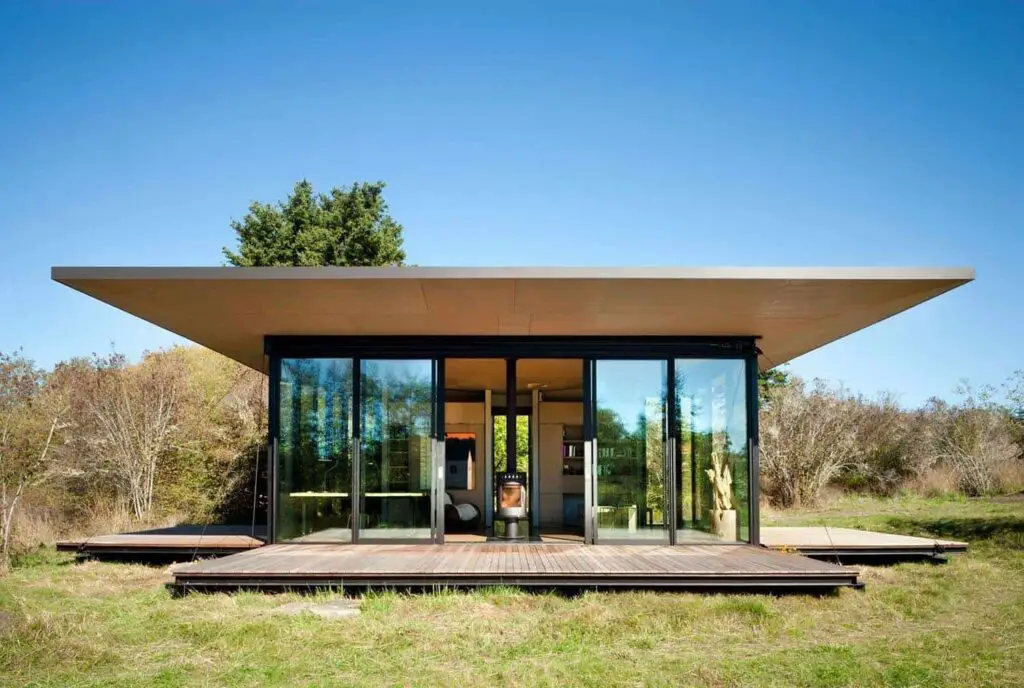
Conclusion
After conducting extensive research on the best material for a flat roof, it is evident that there is no one-size-fits-all answer to this question. The choice of material for a flat roof depends on various factors such as climate, budget, durability, and maintenance requirements. However, several materials have proven to be popular and effective options for flat roofs.
One of the most commonly used materials for flat roofs is EPDM (ethylene propylene diene terpolymer). EPDM is a synthetic rubber membrane that offers excellent durability and resistance to UV rays, ozone, and extreme temperatures. It is relatively easy to install and requires minimal maintenance, making it a cost-effective choice for many homeowners. Additionally, EPDM has a long lifespan, with some roofs lasting up to 50 years when properly maintained.
Another popular material for flat roofs is PVC (polyvinyl chloride). PVC membranes are highly durable and resistant to chemicals, fire, and punctures. They also have excellent UV resistance, which helps to prolong their lifespan. PVC roofs are known for their energy efficiency, as they reflect sunlight and reduce heat absorption, resulting in lower cooling costs. However, PVC roofs can be more expensive than other options, and their installation requires professional expertise.
For those seeking a more environmentally friendly option, TPO (thermoplastic olefin) is worth considering. TPO roofs are made from a blend of rubber and plastic, making them recyclable and energy efficient. They have excellent resistance to UV rays and chemicals, as well as high puncture resistance. TPO roofs are also relatively easy to install and maintain, making them a popular choice for both residential and commercial buildings.
The best material for a flat roof depends on individual circumstances and preferences. EPDM, PVC, and TPO are all viable options, each with its own set of advantages and disadvantages. It is crucial to consider factors such as climate, budget, durability, and maintenance requirements when making a decision. Consulting with a professional roofing contractor can provide valuable insights and help determine the most suitable material for a flat roof, ensuring a long-lasting and reliable solution.



